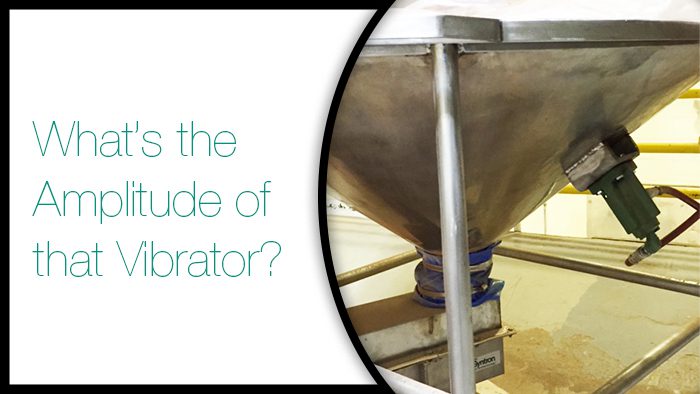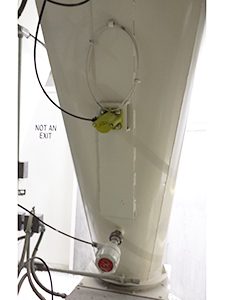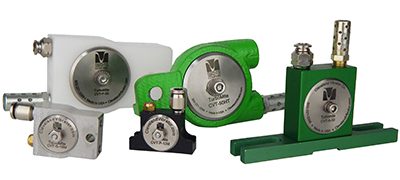“What’s the amplitude of that industrial vibrator?” – I hear this question more often than one might think.
You’d think it’d be a simple question to answer. But, with industrial vibrators, it just doesn’t make sense and isn’t relevant to most applications. In my book, no vibrator has “an amplitude.” However, without a doubt, each vibrator model has unique performance characteristics that we can measure and record.
Once we understand the requirements for the application, like a vibrator on a bin or hopper to assist in material flow or mounted on a piece of equipment, the vibrator performance characteristics help our sales and engineering staff make the best recommendation for optimal performance. But you can’t say, “I need a vibrator with an amplitude of X,” and get several options.
What structure characteristics affect the amplitude of vibration?
When you start thinking about the amplitude of movement of anything with a vibrator attached to it, you’ve got to ask yourself several additional questions:
- What’s the weight and wall thickness of the structure?
- Is there isolation involved or is it rigidly fixed to a support?
- Is the goal to move or compact material or just introduce “movement” in a section of the structure?
With vibrating equipment, it is relatively easy to calculate the expected “amplitude” of the finished unit while we’re still in the design phase. Using solid modeling, we have a good sense of the weight of the unit. Put this together with the performance parameters of the vibrator and we can accurately predict the expected amplitude of the finished unit. Take the weight of the unit, frequency of the vibrator, and its known force, toss in a conversion factor, and you can kick out a decent estimated amplitude of the completed assembly. This helps us predict the performance and capacity of the equipment, be it a feeder, screener, or compaction table.
What factors does the amplitude of vibration depend on?
When asked, “Hey, what’s the amplitude of the 1200 VMSAC Pneumatic Vibrator?” you can’t fire back, “Oh, it’s 0.157 of an inch”. Unfortunately, it just doesn’t work that way. Amplitude is not an independent parameter of the vibrator. Amplitude depends on two factors:
- The structure to which the vibrator is mounted
- The freedom of movement of that structure
What hopper characteristics are important for industrial vibrator installation?
Frequently, the customer is trying to improve bulk material flow in a storage container. Typically, the amplitude of the vibrator doesn’t solve bulk material flow problems. Over the company’s history, The Cleveland Vibrator Company has developed sizing charts and guidelines for hopper applications; this involves the characteristics of the hopper, including the following:
- Hopper wall thickness
- Volume of the hopper
- Sometimes material type, if it is difficult to move or sticky
I can’t recall anyone in sales or engineering telling a customer they need a specific vibration amplitude. There are times when the nature of the material will lead us to recommend a “larger stroke or amplitude.” With rotary electric vibrators, this translates to a lower frequency vibrator, resulting in larger vibration amplitude. Given the same force output, a slower frequency vibrator will produce a larger amplitude or stroke when compared to a higher frequency vibrator on the same structure.
As a side note, this relation leads to one of our primary design considerations for our Turbomite Pneumatic Turbine Vibrator line. You will notice we produce forces similar to our competitors at much lower frequencies.
The application of industrial vibrators is rarely an exact science – here’s how we can help!
There are many years of experience here at The Cleveland Vibrator Company. Folks have seen and heard about hundreds, if not thousands, of applications over the years. But what keeps things interesting is the challenge of a new application where you need to explore your options.
We can reach back into the knowledge base and make a good recommendation more often than not. If that doesn’t seem to be the best route, we can generate a computer solid model and run an FEA analysis. This may give us a better prediction of the amplitude of a vibrator-structure assembly. But let’s not use that approach to apply a VM-25 Air Piston Vibrator on a thin-walled hopper section. It’s probably more cost-effective to simply buy one and try one! On the other hand, you could always ask about our 30 day trial period.
Share this blog post:
Follow us:




